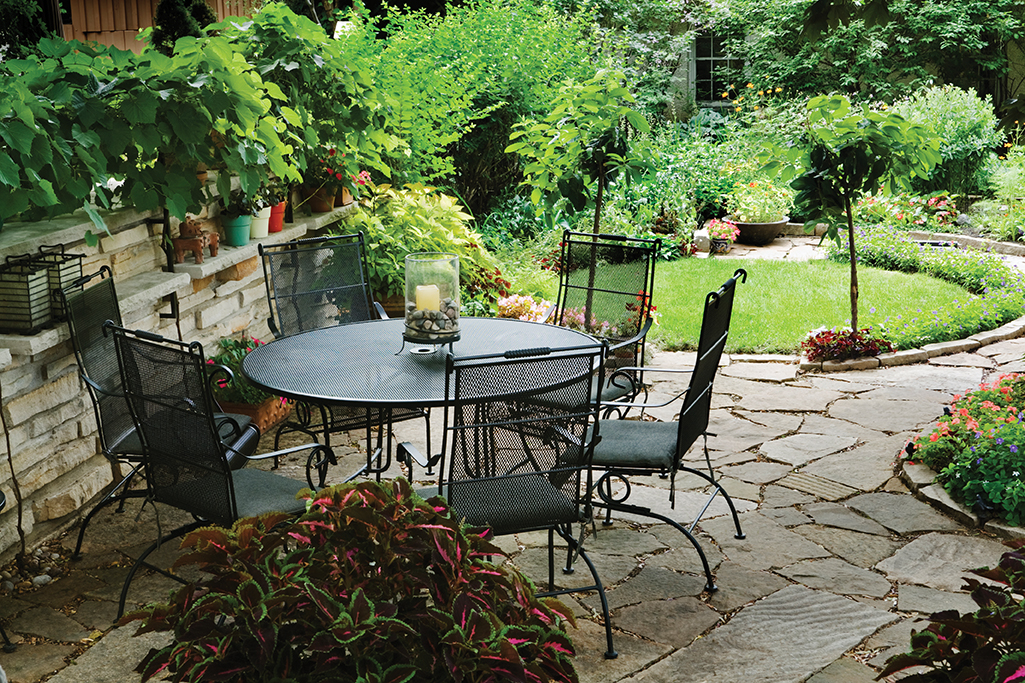
Low water gardening: a how to guide for a Healthy Yard
Brought to you by Gardening at the U of S, the City of Saskatoon, the Saskatoon Food Bank and Learning Center Garden Patch, and the Saskatchewan Waste Reduction Council Compost Coaches!
Planning & Design
A quick inventory of your yard will help you find many ways to save water:
• Identify conditions on your property that influence water use such as sun, shade, wind exposure, soil type, drainage, buildings, and slopes.
• Look for opportunities to reroute drainage onto flowerbeds instead of down the storm drain.
• Select plants and landscape features that complement the specific conditions of your yard.
• Plan the location of shrubs, flowers and garden beds so they do not prevent drainage from your yard or your neighbours’ yards. In most yards, the rear property line is the drainage path for the neighbourhood and should remain clear to ensure proper drainage.
Soil Improvement
Poor soils are not able to provide plants with the water and nutrients they need to stay healthy. All soils can be improved by adding organic matter, such as compost. Compost adds nutrients, increases the availability of water in the soil for plants to use, and improves the texture and structure of your soil. Spreading one to two inches of compost annually on garden beds, vegetable gardens, and lawns is recommended (it will naturally move into the soil on its own, so does not need to be worked in).
Synthetic fertilizers are not recommended (especially in a low-water garden) because they encourage plants to grow beyond what the soil can naturally sustain, and vigourously growing plants demand more water.
Reduced Lawn Area
Lawns can add useful recreational spaces to our landscapes. Unfortunately, traditional lawns often use a great deal of water, pesticides, and chemical fertilizers. Consider lawn alternatives, such as drought tolerant ground covers or native grasses that are well-adapted to our climate.
Reducing the amount of lawn in your yard will have the highest impact on your water usage. Consider limiting your lawn area to a practical size by converting areas of your lawn into growing beds, children’s play areas, or outdoor living spaces.
Efficient Watering
Every plant needs a different amount of water to thrive; therefore, low-, moderate-, and high-water zones should be created in your yard. Group plants that have the same water needs together so that watering can be done more efficiently. Low-water areas should take up at least 60% of your landscape, while high water areas should cover less than 10%.
As a rule of thumb, plants that produce juicy fruits or vegetables tend to be high water plants; whereas, plants that are slow growing, woody perennials, or have silver, fuzzy, or waxy leaves tend to need less water.
Watering should be done early in the morning to reduce evaporation. Drip irrigation is the most efficient at getting water to the root zone of plants, while keeping leaves and stems dry (which will help keep many plant diseases at bay).
Consider collecting and using rainwater for your garden and lawn. This free resource can be captured in barrels off your home or garage and then redistributed to your yard. To learn more about rain barrels, read our Rain Barrel: How-To Guide.
And remember, even low-water plants will need to be watered until they are established. It takes about three years for a perennial to fully establish, but you can reduce your watering a little bit each year as the plant adapts.
Appropriate Plant Selection
Low-water plants that are compatible with the soil, sun exposure, and irrigation conditions of your yard should be used.
Native plants are often a good choice because they are adapted to our climate. Contact the Native Plant Society of Saskatchewan (npss.sk.ca) for planting recommendations suitable for your space. Please do not collect native plants from the wild.
For hot, dry areas with south and west exposure, choose plants that require minimal water like sedums or drought tolerant grasses and flowers. Along northand east-facing slopes and walls, choose plants that like more shade and moisture like bergenia or lamium. Plants at the top of a slope will get less water than those placed on level surfaces or in depressions.
Mulch
Mulch is a layer of organic material that provides a cover over the soil to reduce evaporation, maintain constant soil temperature, reduce erosion, and limit weed growth. Mulching is critical in a low-water, low chemical garden.
To mulch your flower and vegetable beds, simply add a four to six inch layer of shredded post peelings, wood chips, or fallen leaves to the top of your soil. Not only will this make for a lower maintenance garden bed, but it will also provide a healthy ecosystem for
ladybugs and other beneficial insects so you’ll have fewer pest issues!
Maintenance
A water conserving landscape means less watering, fewer weeds to pull, and less lawn to mow. Minimal maintenance will be needed to keep your yard looking good year after year.
• Lawn areas should be watered deeply and less often to encourage deep root growth. They should be mowed high, with the clippings left on the surface for added nutrients.
• Compost should be applied annually and mulch should be topped up as necessary.
• During the first growing season, plants should be watered deeply once a week, depending on the weather. After the initial growing season, plants should only be watered as needed.

